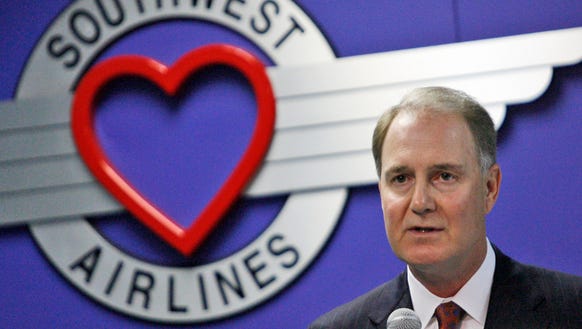Leeham News and Analysis
There's more to real news than a news release.
Production transformation key to Boeing NMA
March 20, 2018, © Leeham News: As Boeing builds the business case for the New Midrange Airplane (NMA, or 797), dozens of major factors come into play, along with the hundreds or thousands of smaller one.
The market demand, of course, is a well-known business case element.
So is price to the customer, the design and capabilities of the airplane, the engines and the technology of them, whether there will be a sole- or dual-source engine, where the airplane will be assembled and how it will be produced.
- .Production transformation is the focus of the Southeast Aerospace & Defence Conference June 25-27, organized by Leeham Co. and Airfinance Journal.
One Boeing official told LNC that the 797 is as much about production as it is everything else. This goes to cost and cost goes to pricing.
Automation, robotics, digital design, 3D printing and additive manufacturing are key to producing the 797. Many elements are already in place on other Boeing programs, most described in the media already.
One key supplier is Dassault Systemes.
Pratt & Whitney’s Indian trouble
By Bjorn Fehrm
March 14, 2018, ©. Leeham Co: India’s Directorate General of Civil Aviation (DGCA) grounded Airbus A320neos equipped with Pratt & Whitney GTF engines with faulty compressor seals Monday.
Affected are eight A320neos of Indigo airlines and three A320neos of GoAir. The Indian groundings are unusual as they go beyond the directives of EASA and FAA for the problem.
Airbus, Boeing respond differently to engine problems
March 14, 2018, © Leeham Co.: Airbus and Boeing have engine issues on in-service airplanes, but customers point to very different responses to getting their  grounded airplanes back in the air.
grounded airplanes back in the air.
Airbus’ problems with A320neos powered by Pratt & Whitney Geared Turbo Fan engines have been making headlines almost since introduction in late 2016.
Less well publicized, but nevertheless by now well-known within the industry, has been Boeing’s 787 powered by Rolls-Royce Trent 1000 engines.
A321neo plus a stretch too far for NMA: Avitas
Published 05 Mar 2018 by Airfinance Journal
Special to Leeham News.
March 8, 2018, (c) Airfinance Journal: A leading appraisal firm questions whether Airbus should respond to Boeing’s proposed new midsize aircraft (NMA) simply by enhancing its existing product line.

John Vitale. Source: Airfinance Journal
“There is a gap, a natural gap that needs to be filled, so I am not sure whether the A330 coming down…and the A321 coming up, fills the gap,” said John Vitale, president and chief executive officer of Avitas, speaking on a panel of appraisers at Airfinance Journal’s Korean Airfinance event, adding: “Airbus claims the A321 has all this range and that they can put in as many seats as they are talking about. Well, no you can’t in an equal comfort level.”
However, Vitale acknowledges a possible further stretch by Airbus of its A321neo, the A322, or enhanced versions, such as the ‘A321neo-plus’, or even an ‘A321neo-plus-plus’“pushes out the timing of the NMA aircraft.”
Airbus rolls out A350-900ULR
By Bjorn Fehrm
Subscription Required
Introduction
March 5, 2018, © Leeham News: Airbus rolled out the first A350-900ULR the other day. The aircraft will be delivered to Singapore Airlines later this year. Singapore Airlines will use the aircraft to reopen the famous 20-hour flight, Singapore-New York. It will also fly to Los Angeles.
Airbus says the aircraft has a range of 9,700nm, but without saying under what conditions. How many passengers can the aircraft take and in what type of seats are these sitting?
We use our airliner performance model to bring clarity.
Summary:
- The A350-900ULR is touted as a 9,700nm range airliner. This is with restrictions on the number of seats and passengers, far from the nominal 325 seats capacity.
- We use a method we learned from Qantas to evaluate the capacity of A350-900ULR.
- With a Singapore decision to only offer Business and Premium economy seats for the ULR flights, the A350-900 will be space-limited for all flights except the Singapore-New York route.
Norwegian’s creative accounting
By Bjorn Fehrm
March 07, 2018, ©. Leeham Co: In our February 14th article about Norwegian Air Shuttle’s operational losses, we used straightforward calculations to show the airline was losing around 2bn NOK or $300m in the fourth quarter, besides losses in 1H2107. When the airline presented the 2017 results the next day, creative accounting netted the year’s losses to 299m NOK or $32m.
This might change. The Financial Supervisory Authority of Norway (Finanstilsynet) is investigating Norwegian’s accounting methods for 2017.
 Read more
Read more
Pontifications: Measured comments and “useful” information
March 5, 2018, © Leeham Co.: Nothing is as frustrating to a journalist as interview a great subject who doesn’t offer up anything especially useful.
I had a brief sideline interview with one such person at the US Chamber of Commerce Aviation Summit 2018 last Thursday in Washington (DC). Great guy. Not much information.
Brad Tilden, CEO of Alaska Airlines, wasn’t going to be drawn into a discussion of two hot topics facing his carrier. Tilden had just come off an airline CEO panel, where he in his typical Boy Scout charm and enthusiasm opined about the state of the industry, praised the progress of the integration of Virgin America into Alaska and commented on a host of issues. But two topics didn’t come up.
I asked him about the competition vs Delta Air Lines in Seattle, where the two airlines are locked into a major market share battle. I also asked him about the fleet planning now that Alaska operates the Airbus A319, A320 and A321neo inherited from the acquisition of Virgin America. Alaska hitherto has been an all-Boeing 737 operator and recent, Ray Conner, former CEO of Boeing Commercial Airplanes and a good friend of Tilden, joined the Alaska board of directors.







